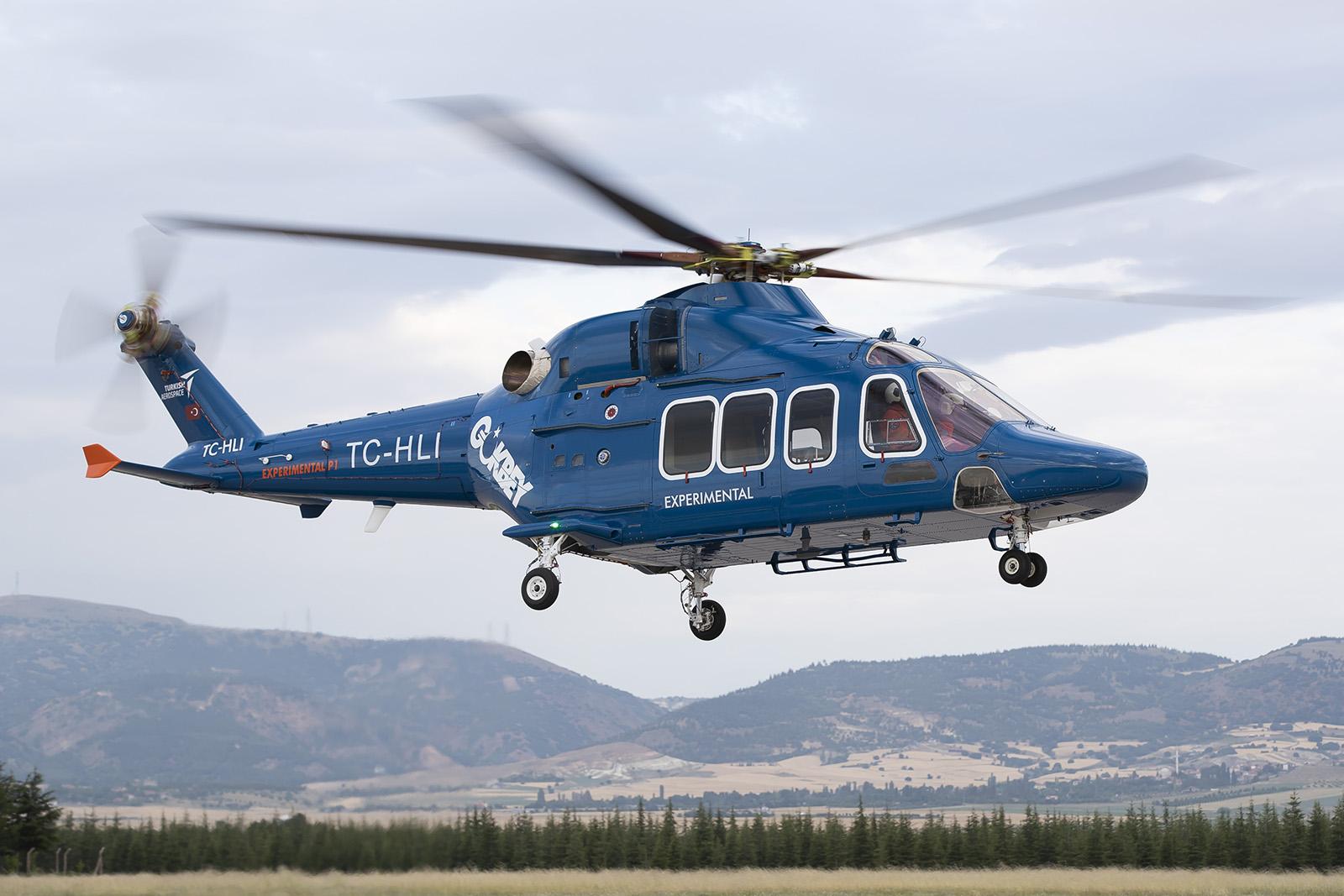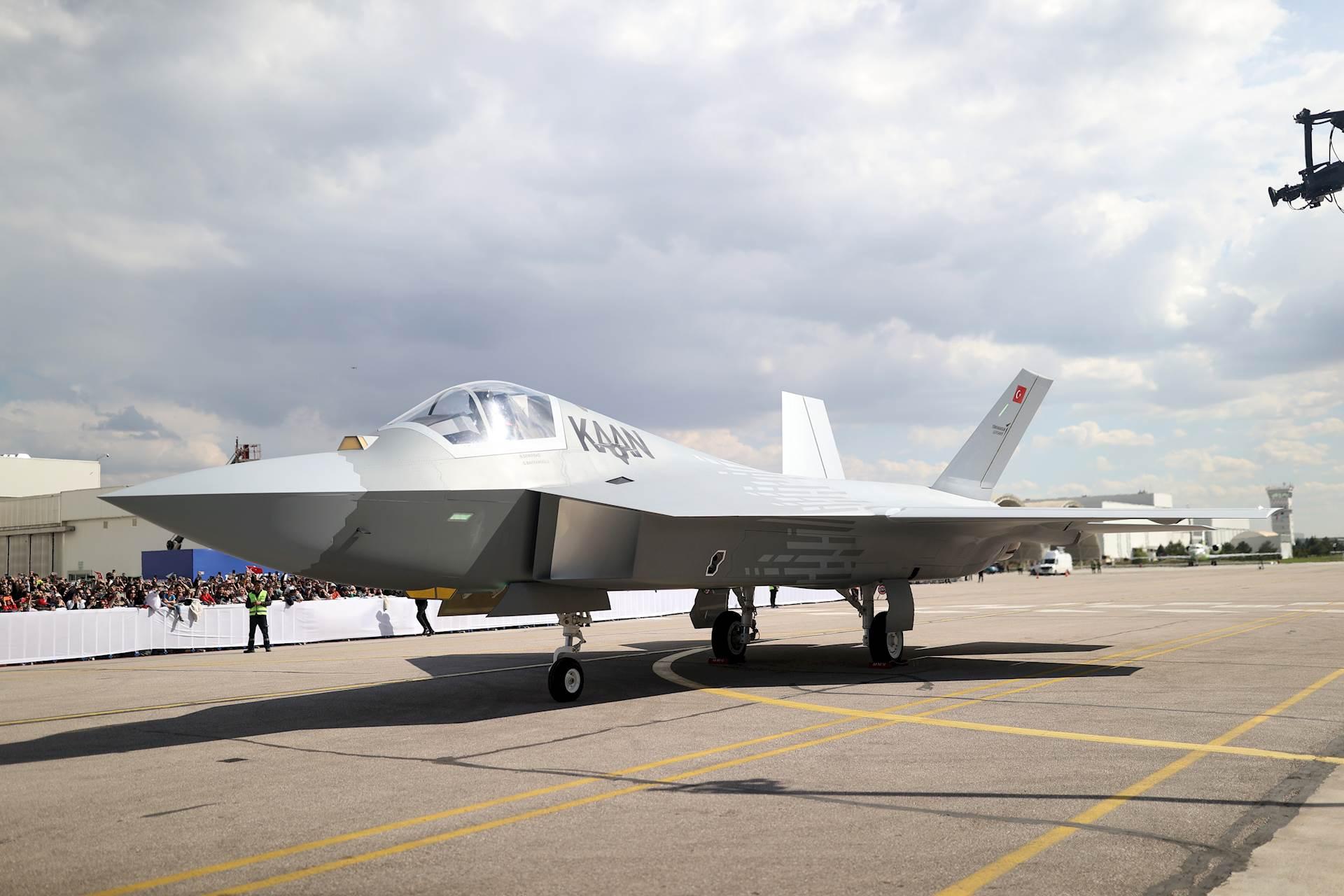In Pictures: Turkey Rolls Out 'Kaan' Fighter
May 01, 2023
Turkish Aerospace has reengined the T625 Gokbey utility helicopter with the the 1,400-shp TS1400, to ease its path to export.

Turkey began working on the fighter project in the late 2000s, with the Turkish Air Force opting for a twin-engine design around 2015. TAI secured a partner in the form of BAE Systems to support design of the aircraft in 2017, and metal was cut on the first components for the aircraft in April 2021.

Turkey increased its priority on the TF-X project after the U.S. refused to transfer F-35 Joint Strike Fighters to Turkey because Ankara had purchased the Russian S-400 ground-based air defense system.

The events on May 1 were attended by numerous Turkish dignitaries including Defense Minister Hulusi Akar and celebrated the country’s rapid progress in aerospace capabilities.

Anka-3 is Turkish Aerospace’s proposal for a strike-capable uncrewed combat air vehicle. Designed to complement platforms such as the air-to-air optimized Baykar Kizilelma, the 7-metric-ton Anka-3 is designed for deep strike and is capable of carrying large bombs externally, or up to eight domestically developed small diameter bombs in two internal bays.

The internally developed Hurjet follows on from Turkish Aerospace’s development of the Hurkus turboprop trainer, which has also been turned into a light attack aircraft. Hurjet resembles other new jet trainer platforms such as the Korea Aerospace Industries (KAI) T-50 Golden Eagle.

Turkish Aerospace has reengined the T625 Gokbey utility helicopter with the the 1,400-shp TS1400, to ease its path to export.

Turkey began working on the fighter project in the late 2000s, with the Turkish Air Force opting for a twin-engine design around 2015. TAI secured a partner in the form of BAE Systems to support design of the aircraft in 2017, and metal was cut on the first components for the aircraft in April 2021.

Turkey increased its priority on the TF-X project after the U.S. refused to transfer F-35 Joint Strike Fighters to Turkey because Ankara had purchased the Russian S-400 ground-based air defense system.

The events on May 1 were attended by numerous Turkish dignitaries including Defense Minister Hulusi Akar and celebrated the country’s rapid progress in aerospace capabilities.

Anka-3 is Turkish Aerospace’s proposal for a strike-capable uncrewed combat air vehicle. Designed to complement platforms such as the air-to-air optimized Baykar Kizilelma, the 7-metric-ton Anka-3 is designed for deep strike and is capable of carrying large bombs externally, or up to eight domestically developed small diameter bombs in two internal bays.

The internally developed Hurjet follows on from Turkish Aerospace’s development of the Hurkus turboprop trainer, which has also been turned into a light attack aircraft. Hurjet resembles other new jet trainer platforms such as the Korea Aerospace Industries (KAI) T-50 Golden Eagle.

Turkish Aerospace has reengined the T625 Gokbey utility helicopter with the the 1,400-shp TS1400, to ease its path to export.
On May 1, Turkish Aerospace introduced the “Kaan” fighter, the new name for its TF-X/MMU indigenous fighter aircraft. Also on display were the Anka-3 uncrewed combat aerial vehicle, the ATAK-2 helicopter and the recently reengined Gokbey helicopter.





